Scuba Diving Near Providenciales, Turks & Caicos: The Complete Guide
Few places in the world can boast beaches as beautiful as those in the Turks & Caicos Islands. Many travelers describe the straight out of a vacation promotion feel of walking down one of the beaches in this territory as “surreal” and “incomparable”.
Where diving is concerned, that awe-inspiring beauty transcends to the undersea making the Turks & Caicos Islands one of the most remarkable scuba diving destinations in the world.
There are many options for dive sites in Turks and Caicos – divers can choose to explore sites in Providenciales (also called Provo and the most populated island in the Turks & Caicos), Grand Turk, Salt Cay, North and Middle Caicos, Pine Cay, and reefs off the coasts of some of the other islands in this area.
The lure for divers to Turks & Caicos is the clear and warm seas, vibrant coral and marine life, dramatic vertical wall diving as well as a chance to explore the third largest barrier reef in the world. Divers can descend to varying depths and scope unique features including spur and groove formations, sand chutes, canyons and so much more.
Insider tip: Planning a dive vacation? Beaches Turks & Caicos make it easy to get PADI® certified and find great diving locations in the Caribbean. The best part is: PADI® certified guests dive their entire vacation for free (max. two tanks a day)! This includes professional equipment and dive crew. It’s part of their comprehensive all-inclusive package.
What’s really beneath the waves in TCI?
Scuba diving is all about interesting sites and sightings. In Turks & Caicos, you will find both. Once you’ve dived a few sites, you’ll notice just how different the topography is, some places in dramatic ways, and others more subtle.
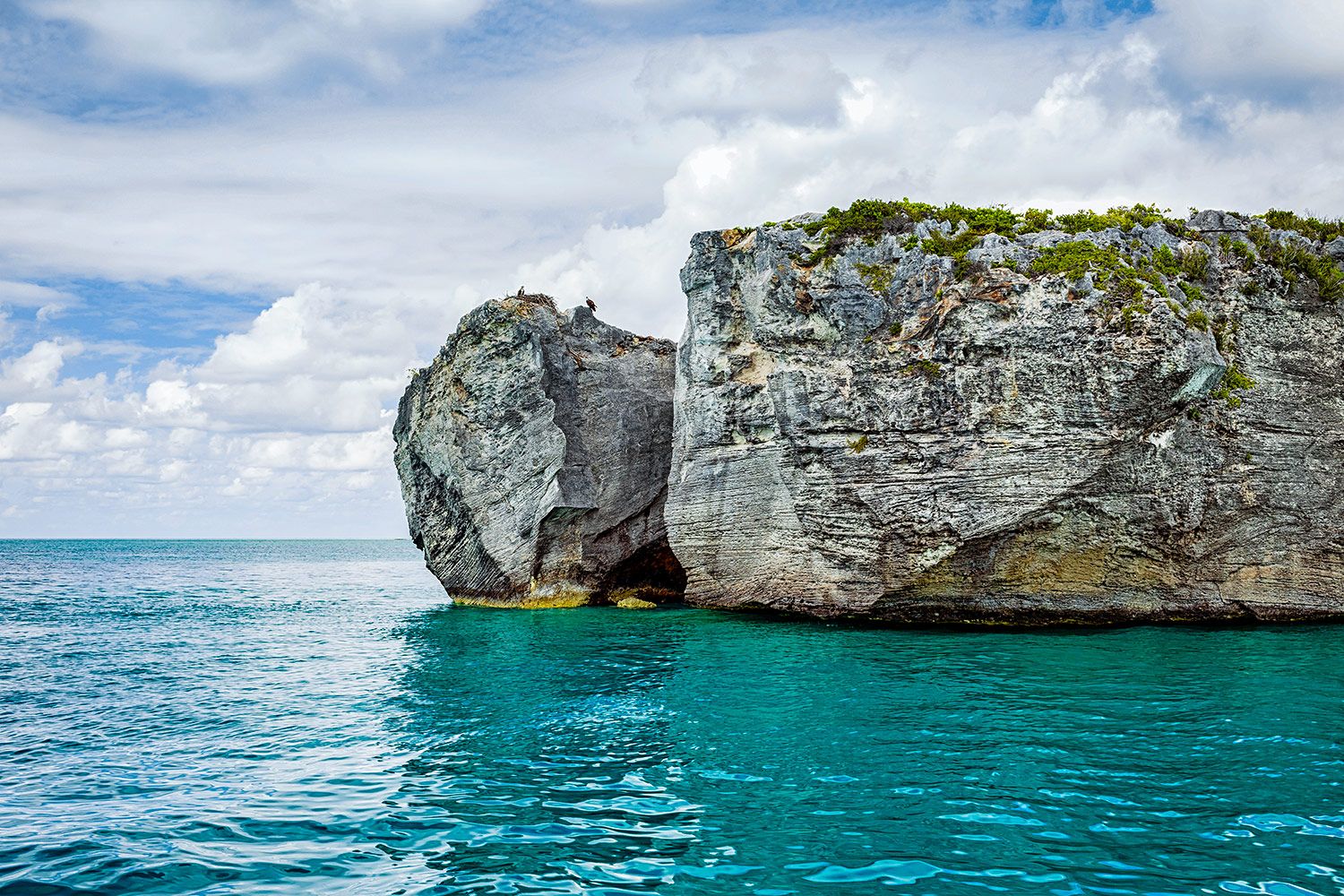
Reefs near Grand Turk and Salt Cay are known for the wide variety of marine life frequently spotted there, while diving enthusiasts will most appreciate the Caicos islands for their stunning underwater landscape, and outstanding reef attributes. Caicos Banks are great for wall diving, but most of these sites can only be accessed from Providenciales so if you’re looking for an impressive dive location, you’re best off starting there!
Tip: For the best visibility while diving in the Turks & Caicos dive on days with fair weather that aren’t too windy, when the water is calm.
17 best scuba dive spots near Providenciales, Turks & Caicos
Whiteface
Dive Site Level: Advanced
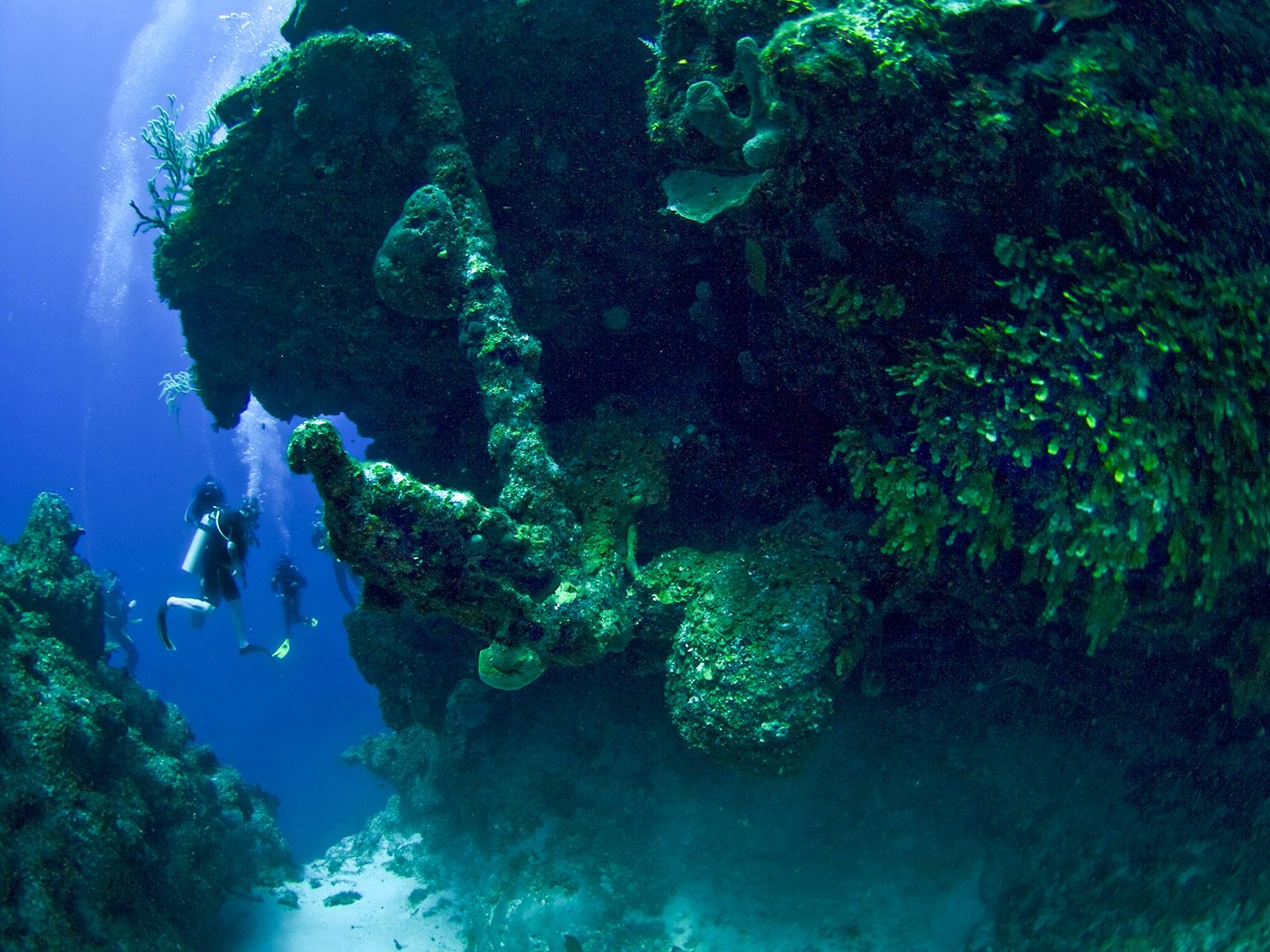
Whiteface Reef is also known as The Anchor, and this site gets its name not for what can be seen underwater, but on shore. At this location there are striking steep white cliffs at the shoreline that command the attention of visitors, and there are even more impressive formations beneath the waves including pillar coral. This is an awesome wall dive which includes sightings of butterfly and angel fish, parrotfish, groupers, lobsters, and barracuda. The depth of the wall is about 100 ft. As you descend, you’ll spot a large anchor embedded in a crack in the wall (around the 70 ft mark).
Half Mile Reef
Dive Site Level: Advanced
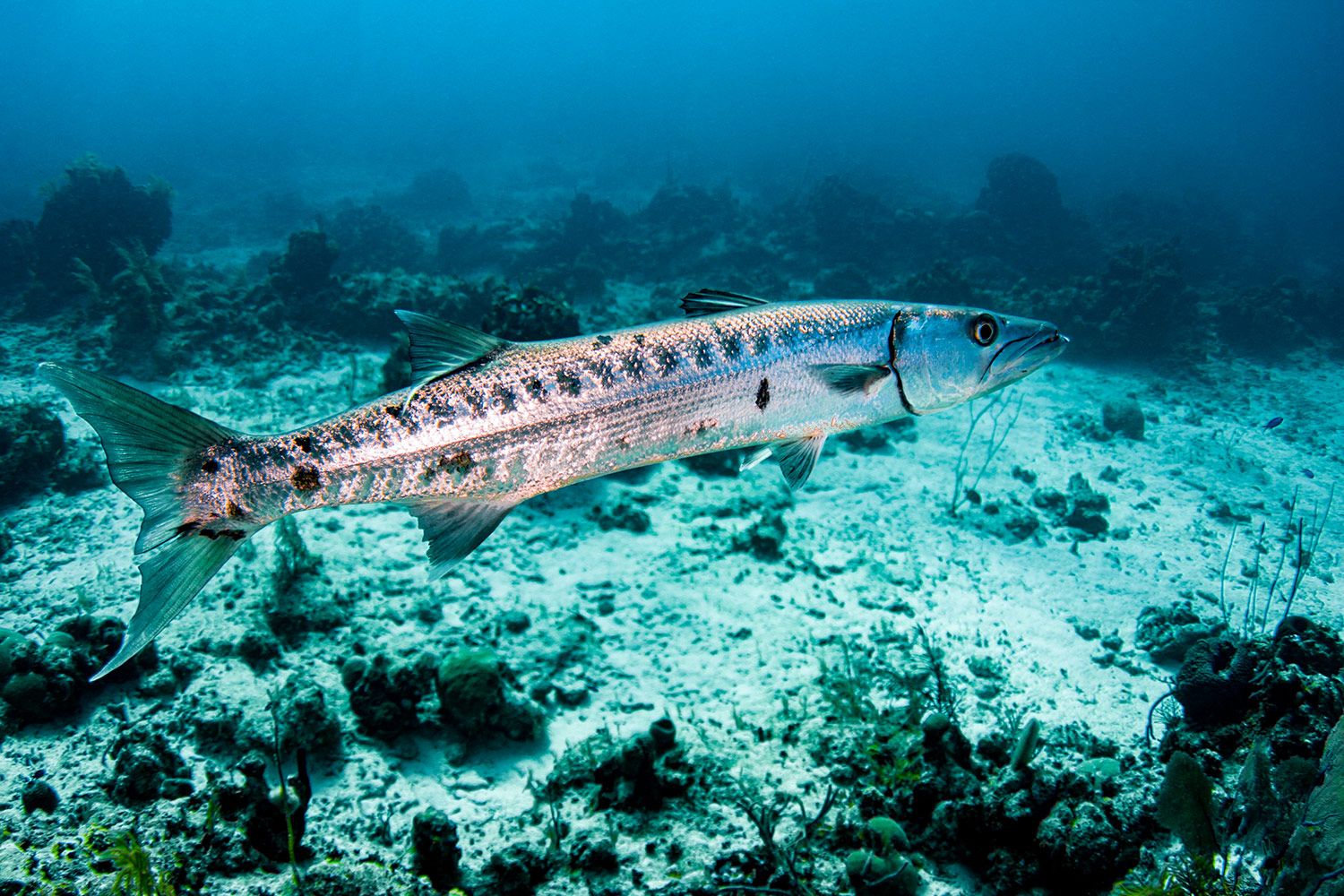
The name of this reef gives insight into its length. It is located offshore and to the east of French Cay. One of the attractions here are the two large elephant sponges, which are 7 to 8 feet across. They are just about 20 feet apart and can be found around the 85 ft curve. Divers who explore this reef can expect to encounter large schools of barracuda, as well as mahogany snappers, amid this versatile reef which includes areas with less current pull due to the positioning of certain sections of the reef. Notably, the waters around French Cay are generally known for sightings of humpback whales (January to March annually), and you could be lucky enough to see one while diving in this area.
Coral Gables
Dive Site Level: Novice
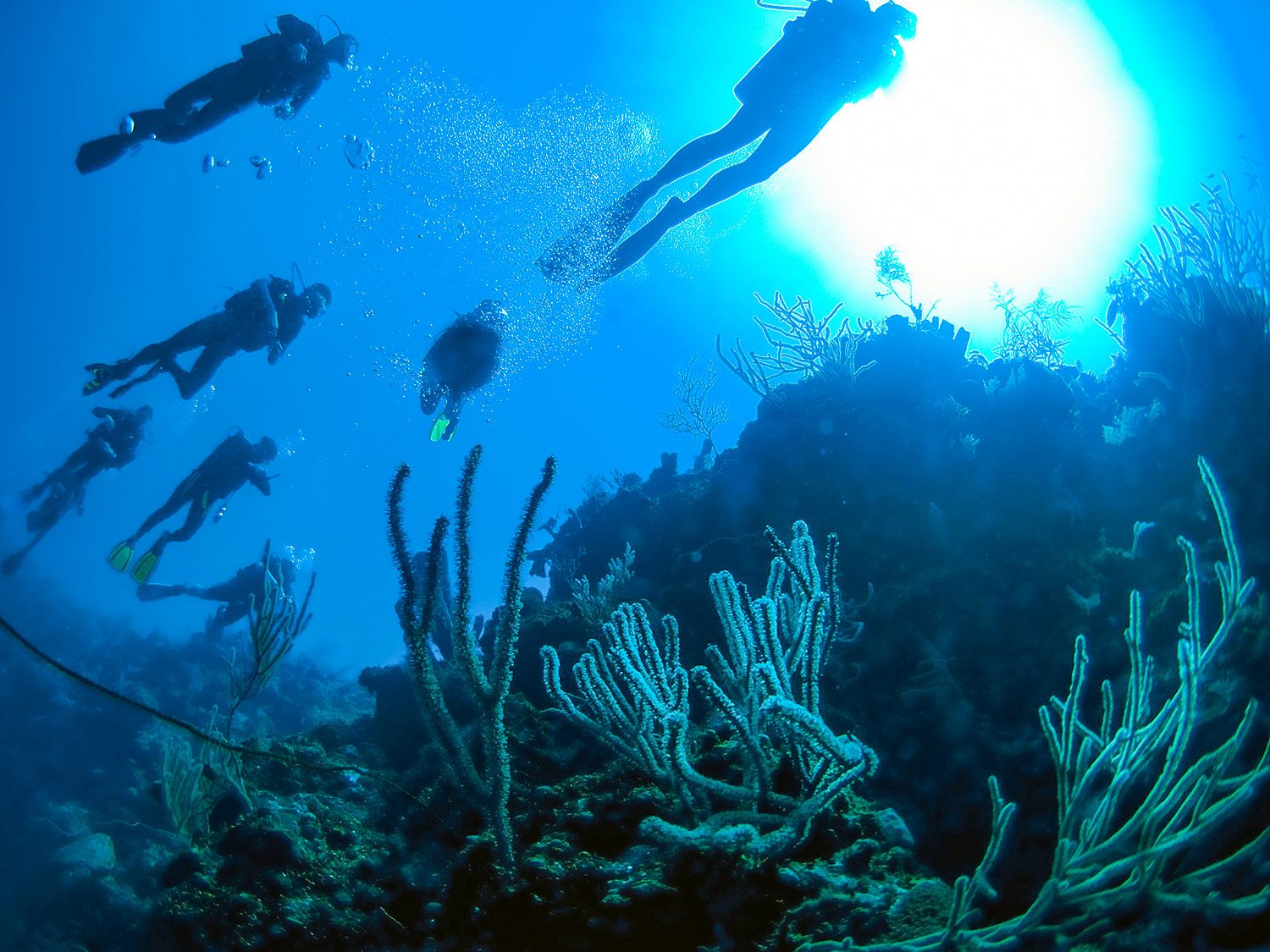
Coral Gables is a good dive location to start off with if you’re diving in a group that includes less experienced divers. This dive includes a gently sloping wall which means divers can choose how far and how deep they want to go. Here you’ll spot sand chutes, a variety of coral types, and fishes including grunts, snappers and groupers. Lobsters are commonly seen here as well.
Shark Hotel
Dive Site Level: Advanced
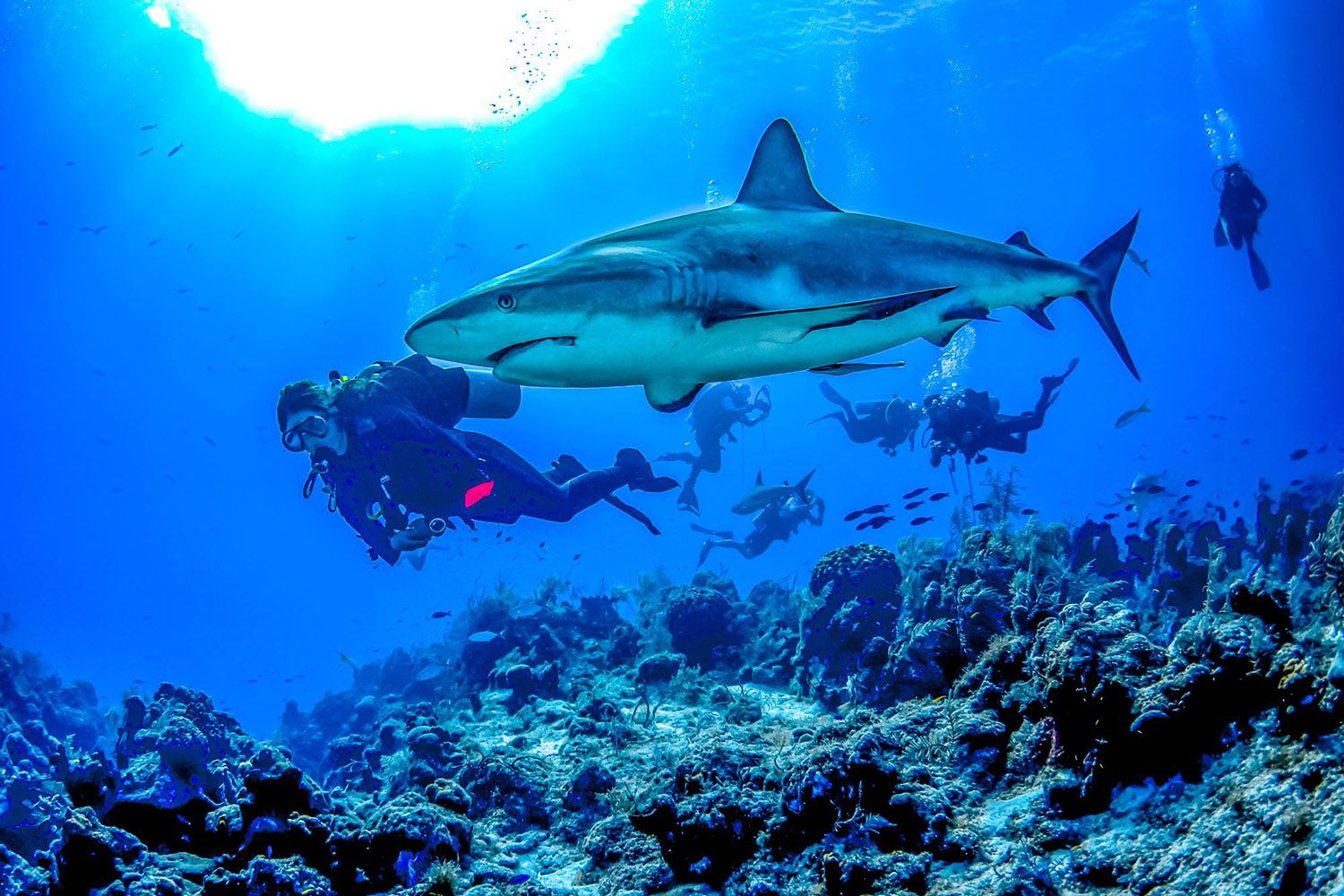
Shark Hotel is a well ranked dive site off Northwest Point, Providenciales. As the name suggests this is a great place to spot sharks, and in particular, reef sharks. Other marine life you’ll see swimming by include grunts, snappers and goatfish – these are usually near the top of the wall. The maximum depth of this dive site is over 150ft/46m. The wall starts at the 45 ft mark, and plunges downward to a plateau, which extends outward creating a shelf. Some of the largest pillar coral in Turks & Caicos can be found here.
Aquarium
Dive Site Level: Advanced
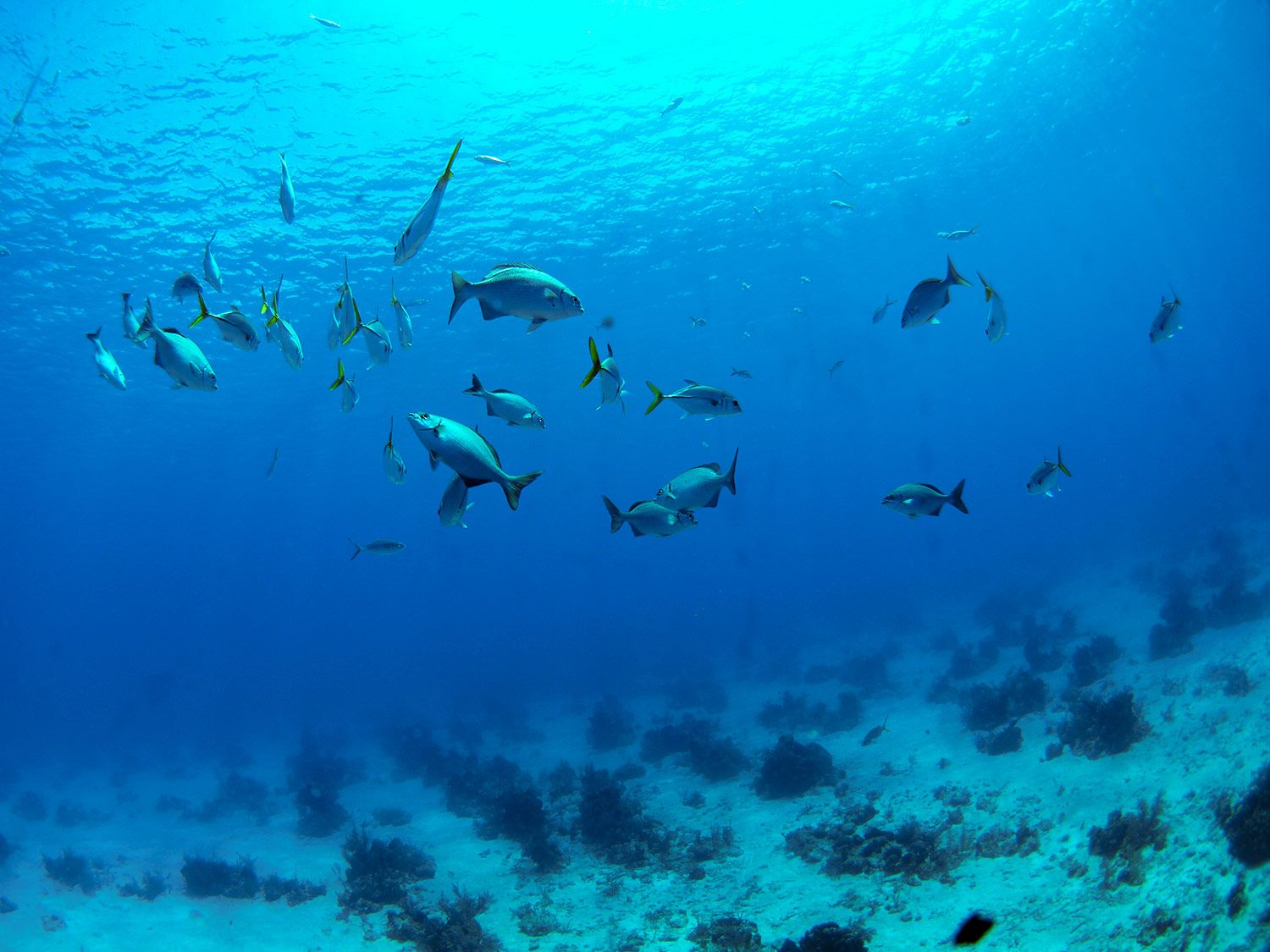
You’ll feel like you’re in a life-sized aquarium while swimming along with large schools of grunts and snappers in a sequence that seems never ending. These are a common fixture at the top of the wall of the Aquarium dive site. The wall here is spur and groove in terms of its appearance, and markedly so. There are also sand chutes that extend through the reef, downwards to the 100 ft mark. These are a sight to see, as are the turtles, nurse sharks, and grey reef sharks that sometimes hang out here.
Amphitheater
Dive Site Level: Advanced
Amphitheater is one of many dive sites that can be explored within the Columbus Landfall Marine National Park. It is one of those locations you don’t want to miss out on because of its uniqueness. You’ll literally feel as though you’re taking in an underwater feature at an amphitheater as you get to the bowl like formation, with three sloping sides. Sightings include blue parrotfish, queen triggerfish, sea urchins, creole wrasse, snapper, horse eyed jacks, turtles, lobster and sometimes reef sharks. Amphitheater extends around 1000 ft from shore and drops thousands of feet past that point. Look out for the large elephant ear sponge, orange rope sponges, plate corals and black coral.
Tip: If you go further south in the marine park, there’s an eel garden at Chief Ministers. At other sites in this area you may spot groupers, yellowtail, razorfish, batfish, flying gurnards and more.
Grouper Hole
Dive Site Level: Novice
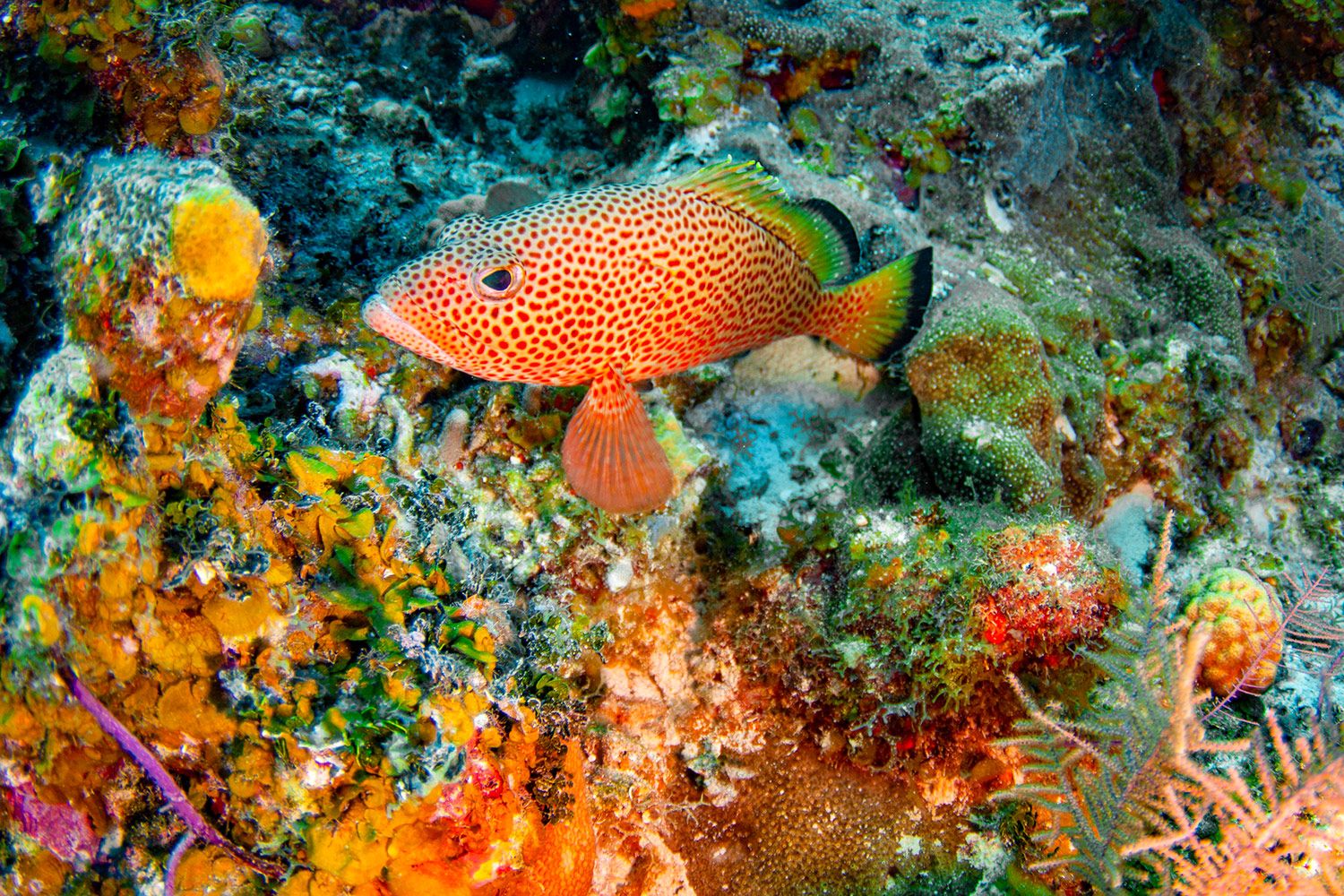
Grouper Hole is one of the many dive sites off the coast of Providenciales. The name of this dive site goes back to the days before the marine park in this area was established, and it is frequently said that Grouper Hole was once a feeding site for groupers. This area is known for having good visibility, with an average depth of 100 ft. Access is by boat, and once you arrive you’ll be able to dive right in to explore the wide sand chute beneath the ocean, with a coral head as the central point of interest. The wall has a gradual slope which makes it suitable for all skill levels. Aside from groupers, other sightings include flounder, puffer fish, and lobster.
Eagle Ray Pass
Dive Site Level: Master
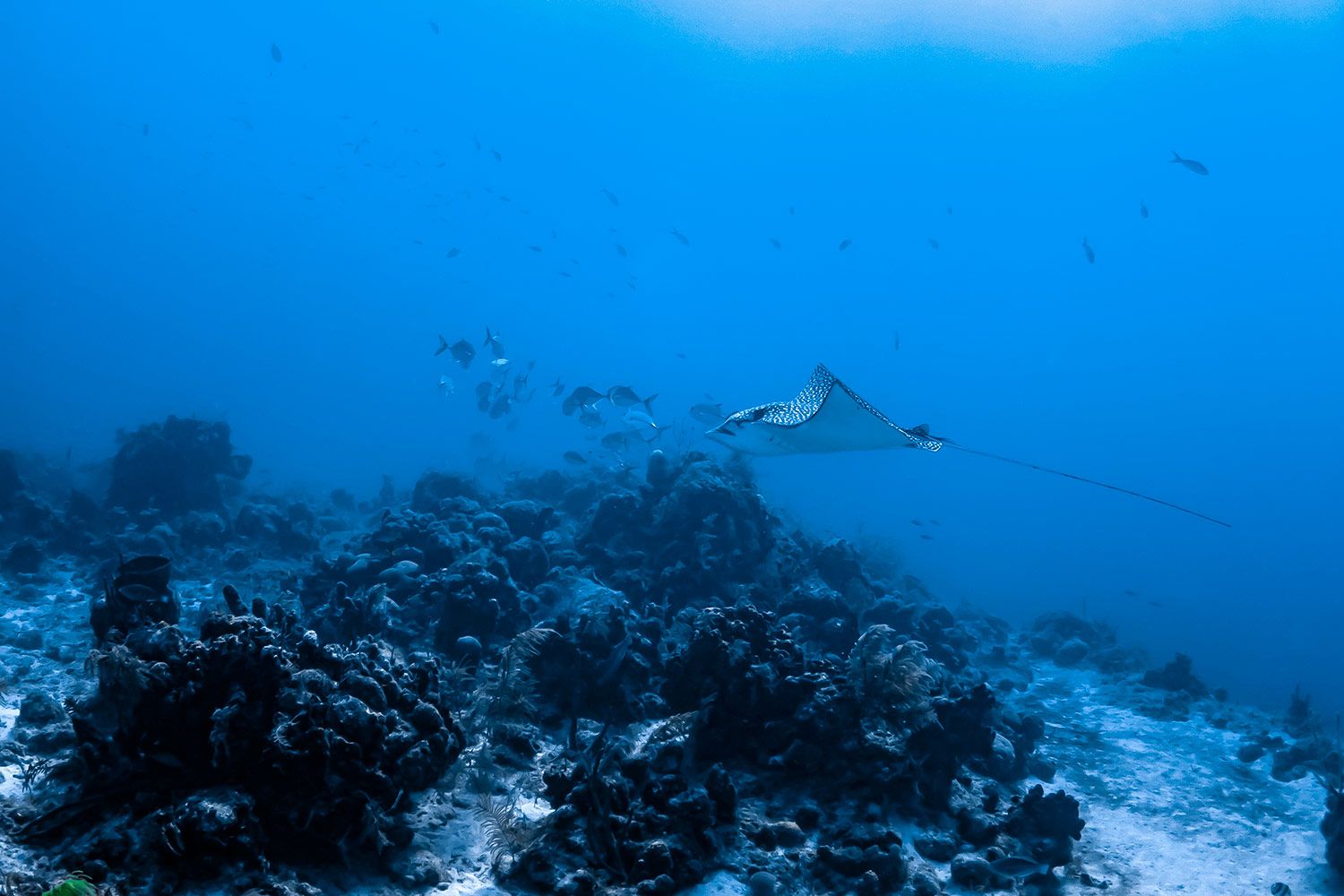
Eagle Ray Pass is a boat accessible dive with a maximum depth of 111-120 ft. The reef starts around the 45 ft mark, and slopes downward to a plateau. This site is well known for its great visibility and wide selection of corals. Despite the name, you’re more likely to see a variety of reef fish here than eagle rays!
Football Field
Dive Site Level: Advanced
If you can imagine the wide expanse of a football field underwater, with sand in the place of vivid greens, then you can picture the open ocean floor topography of this dive. Well, that is in between the three sloping coral walls that are amazing to witness. Sightings include squirrelfish, white grunt, yellowtail snapper, creole wrasse, jacks, Bermuda chub, grouper, Caribbean spiny lobster, tidal spray crabs, barracuda, as well as a variety of soft and hard coral including barrel sponges. There are lots of juvenile fish at this reef off Pine Cay, and the maximum depth is 141-150 ft.
Highway to Heaven
Dive Site Level: Advanced
Highway to Heaven is known for its coral arches and swim throughs (80-200 ft), as well as lots of stingrays playing in the sand. Located off West Caicos (southwest of Providenciales), this is a deep dive and thus it is best suited for more experienced divers. The reef starts around 50 ft, and during a dive here you’re likely to spot garden eels (in the sand flat), an abundance of reef fish, stingrays, and sometimes sharks.
The Crack
Dive Site Level: Advanced
The Crack is one of the more “dramatic” dive sites in TCI. It is off the coast of Provo, and a literal crack runs in a big arc through the reef, hence the name. The crack or crevice in this reef extends from the 50 ft mark to about 100 ft, and it’s deep enough with an opening at the top that divers can explore easily. Through the crack, divers can make their way onto an extensive, sandy ledge (around 125 ft). Sightings along the way include lobster, crabs, and other small sea creatures. On the top side, you’re likely to spot large schools of snapper and grunts. Black coral and deep-water gorgonian are other prominent features, and you may also see eagle rays or sharks.
The Hole in the Wall
Dive Site Level: Advanced
Hole in the Wall is considered one of the best dive sites in Turks & Caicos. It is a reef with a hole at the top (55 ft) that goes downward into a cavern. Divers can get through the hole which some describe as “a bit snug but worth it”, to the edge of the wall (90-95 ft). Only one diver can get into the hole at a time, but most who’ve done this dive say the feeling of going from the hole into the deep is comparable to none! Sightings here include lots of sheet coral formations, reef fish, and juvenile barracuda. The maximum depth is over 150 ft.
The Gulley
Dive Site Level: Novice
Diving through The Gulley is an incredible experience – this reef forms two distinct sections with a cut in the middle that you can swim through scoping the sightings on either end. The wall starts at 50 ft, and all around there’s coral of all kinds, including sponges, mushroom coral, and black coral. The wall drops off vertically, and sightings along this dive include garden eels, French angelfish, hogfish, yellow jacks, moray eels, spotted eagle rays, and reef sharks.
Double D
Dive Site Level: Advanced
French Cay has a great diving reputation and it is one of the first locations many divers choose to go to once they arrive to the Turks & Caicos islands. Double D off French Cay is great for divers who know their way around the water, especially since currents are often strong in this area. This dive site is just opposite the bird sanctuary on French Cay, and its name comes from the two large peaks (pinnacles) that rise from the seafloor. Double D is the perfect choice if you’re looking for a wall dive where you can also explore an open area. Spade fish, black durgon, jacks, grouper, dolphins, and sharks are commonly seen in this area. In the earlier months of the year, if you listen hard enough, you may just hear the song of migrating whales in the distance!
Molasses Reef
Dive Site Level: Novice
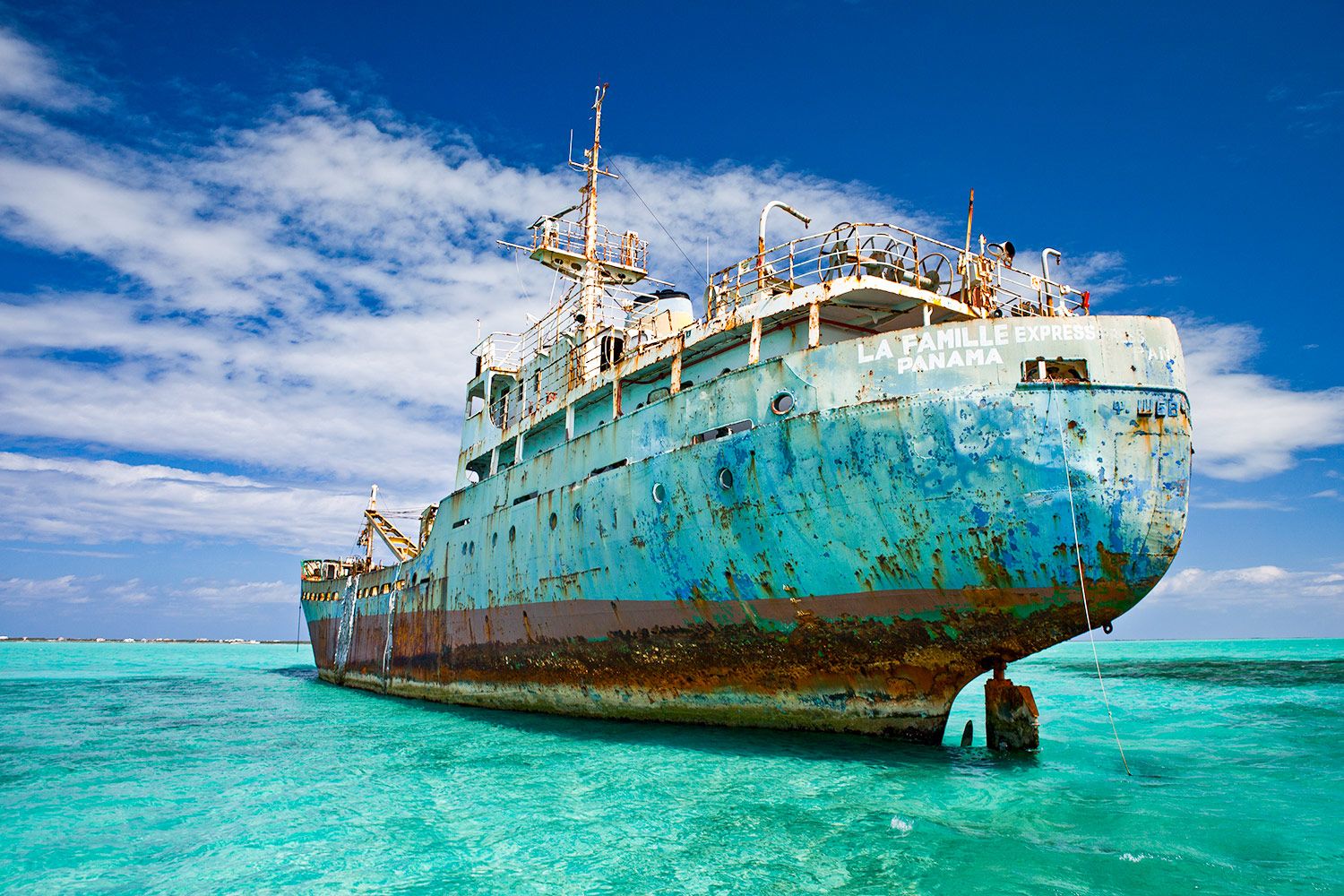
There are many reasons to dive at Molasses reef near French Cay, including that it’s mostly uncharted, which means it’s quite pristine. A dive here presents the opportunity to see historic shipwrecks (on the shallow end), admire unique coral formations, and even swim near sharks! Near the vertical wall at Molasses you’re likely to spot sharks, turtles, and spotted eagle rays. At the top of the reef you’ll also see some large groupers and jacks. Many who dive here report spotting dolphins, and in particular, Jojo, who seems to have made a home in this area!
West Caicos
Dive Site Level: All levels
The reef at West Caicos (southwest of Provo) has a wall that is about 6 miles long, and there are at least 25 dives you can sign up for in this area. The wall is near shore, and on the Leeward side off the island, which is more protected. Divers of all skill levels will appreciate this dive site, as the reef isn’t too far down (35-45 ff). West Caicos reef, because of its extensiveness and relatively shallow depth, is a great introductory option for open water divers. As West Caicos is uninhabited, the reefs here tend to be quite immaculate. Sightings here include grunts, snapper, groupers, blue tangs, turtles, rays and sometimes sharks. You’ll also be able to have a close up look at barrel sponges, staghorn corals and large orange elephant ear sponges.
Grace Bay and the Princess Alexandra National Park
Dive Site Level: All levels
Grace Bay Beach has been described as the most stunning beach in the world – it is only natural that an exploration beneath the waves in this area would be just as spellbinding. Reef dives here start from 25 to 40 ft, and it takes 5-10 minutes to get there from shore. A barrier reef protects the coast and adds to the ambiance of this exciting dive. The walls here drop to about 100 ft, and you’re likely to spot lots of grouper, lobster, turtles, snapper, grunts, barracuda, and reef fish. There are also huge barrel sponges and deep coral canyons that will capture your attention, as you sink into a life much unlike the one you’re used to back on solid ground. Overall, the vibrancy of the marine life around Grace Bay makes it a ‘must-dive’ location in Turks & Caicos.
When to go scuba diving in Turks & Caicos
Like most Caribbean islands, there really isn’t a bad time to go to the Turks and Caicos Islands. The weather in this part of the world is usually around 82-84° F in summer and 74-78 °F during the months that many other parts of the world observe as winter.
There are about 350 sunny days in TCI annually on average, which means really and truly, the odds are in your favor that you’ll choose the perfect time to go.
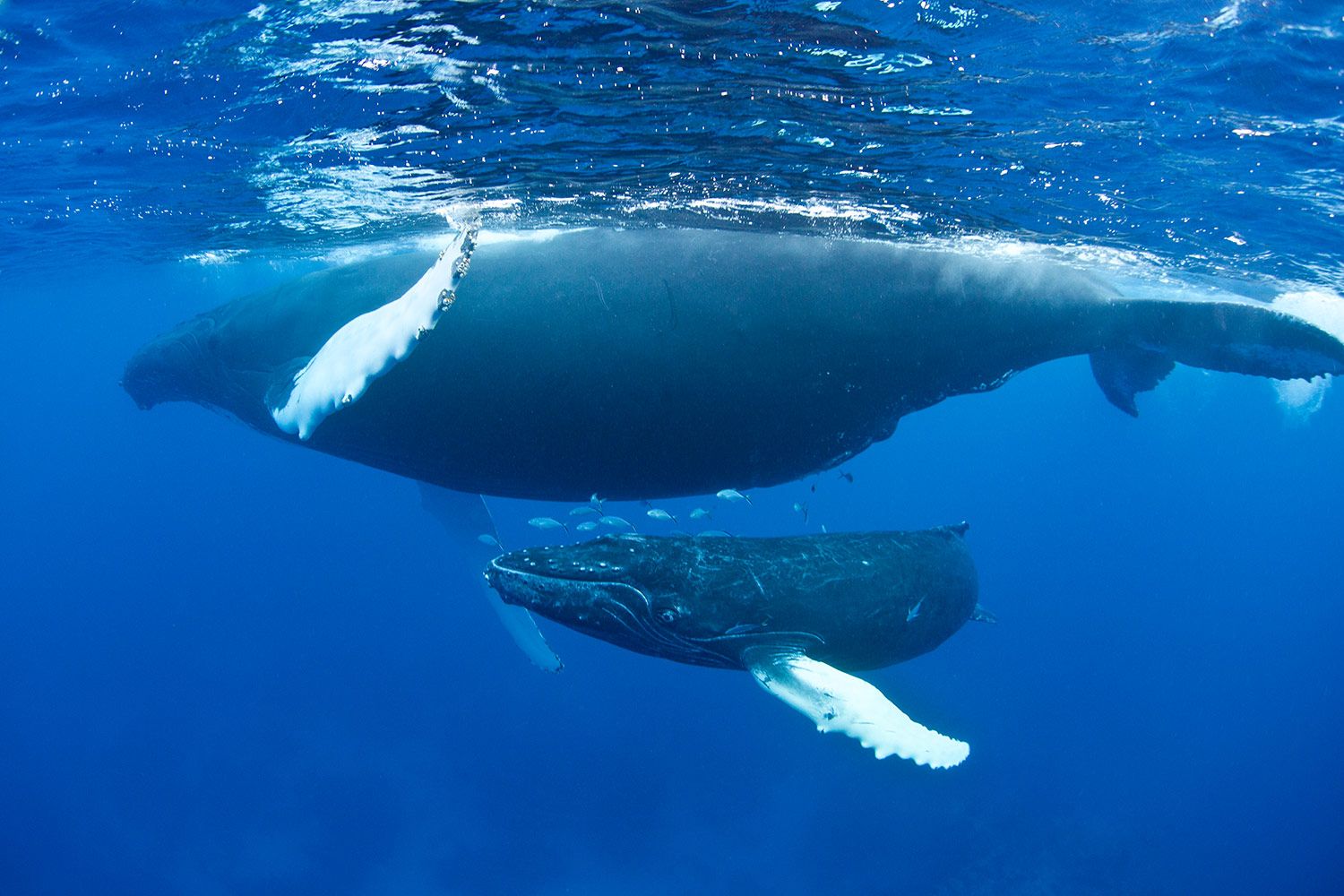
If you’re hoping to spot humpback whales, or even just to hear their migrating songs, you might want to schedule your vacation during the earlier months of the year (January to April).
If slightly warmer water temperatures are what you’re after, the summer might be best, but truthfully, cold seas are hardly something you’ll need to think about in the Caribbean.
Perhaps the only real consideration is low or high season, and that would depend on your budget, and what other activities you’re hoping to take in while there. The high season for TCI is usually from mid-December to mid-April, and the low season from around June to October/November.
Dive for free with Beaches Resorts!
Diving can get costly, especially in a family setting, so it’s worthwhile to consider going the all-inclusive way when planning a dive vacation. This is a very real option in islands in the Caribbean with all-inclusive resorts like the Beaches Resorts in Jamaica and Turks & Caicos. All PADI® certified guests dive their entire vacation for free (max. two tanks a day)! This includes professional equipment and dive crew.
With three resorts in the Caribbean, Beaches is loved by families because of its comprehensive list of inclusions. Apart from having resorts located on incredible Caribbean beaches, Beaches stands out for many things including extensive food options, great staff and amazing scuba diving.
During a dive vacation at Beaches, not only will your kids be able to dive for free along with you once they’re above the minimum age (12), they’ll be able to splash around at the Pirates Island Water Park, make new friends at Kids Camp, and get involved in all kinds of fun activities right on property. It’s all included!
Insider tip: Look up Beaches Scuba Kids Programs and Scuba diving courses to start planning your ultimate family dive vacation.
Bonus: alternatives to scuba diving in Turks & Caicos
There are many other things to do in the Turks & Caicos islands besides diving. This tropical archipelago is great for island hopping, with each island having a distinct personality. Some of the islands are uninhabited, which is perfect if you want to spend just one day feeling like you’re stranded on a beautiful deserted island, yet not. There’s also plenty of action beachside, and into the quaint towns and villages in the more populated islands.
If you or another family member wants to dive but isn’t quite feeling scuba (or just aren’t ready), sign up for a SNUBA dive (Beaches Turks & Caicos offers a special Snuba Doo experience for kids between the ages of 4 and 7!), which is a neat combination between snorkeling and scuba diving that’ll still ensure there’s plenty to talk about once you get home. Both snorkeling and SNUBA are good options if you’re not certified but still want to take in some of the magic of the undersea.
Here’s our list of the top ten snorkeling spots in The Turks and Caicos.

